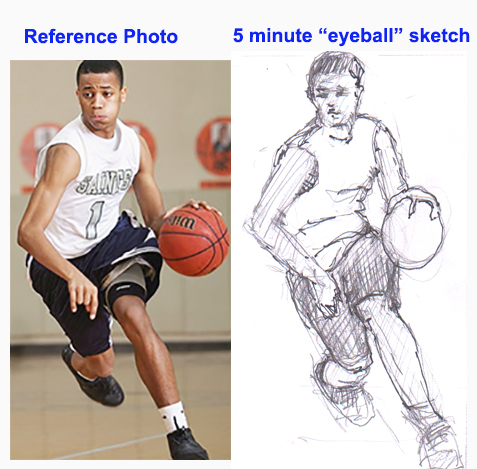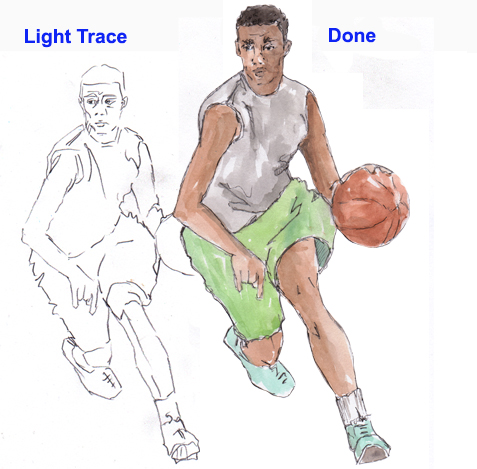Action Sketching: Drawing accurate relationships and cartoons
We at Littleviews encourage you to draw action figures because the act of drawing helps you to better understand a subject and it can fill your time with an enjoyable pastime.
Unfortunately, while many people take drawing lessons, they fail to achieve satisfactory skills. The reason for that is that they are taught to draw completely by eye, with no other tools to measure the correct proportions of a subject.
There are many tools that can be used to quickly create correctly proportioned drawings. Here are examples that appear in Google Image Searches:
- Architects
- Drafting
- Templates
- Leonardo da Vinci’s “Golden Mean Calipers
- Calipers & proportional dividers
- Light tables, tablets & projectors used for copying
If you search for “artist tools,” however, you will mainly see paint brushes.
Leonardo da Vinci learned his craft by spending years directly copying the work of his master, Andrea del Verrocchio. Likewise, Leonardo taught his students by using the same method.
Direct copying teaches people how to see a three-dimensional object, such an action figure, as a one-dimensional (flat) object on paper.

Without using the Leonardo method, you can see above how distorted a freehand sketch can be even when based on a reference photo. The player’s left arm is completely wrong as is the left side of his billowing shorts.
If freehand sketching was your only option, you’ll almost never be able to understand distortion unless an instructor points it out.
Today, you don’t need to copy a grand master’s work to learn about proportions and relationships. Simply find and copy easily available photos and other images you see on the web.
Note that even on my finished painting, I improvised areas, rather than slavishly copied. A cartoon does not impose itself on you. Rather, you impose yourself on it.
Cartoons:
An outline sketch, whether proportional or imagined, is called a “cartoon.” Cartoons are guidelines. Cartoons, in fact, were used to sketch out the imagery that was eventually painted on the Sistine Chapel. Yes, the great masters were cartoonists!
While an outline provides a guide, it is how you finish your drawing that makes your work unique. I will discuss finishing techniques in future blogs.
Links:
For copyright-free reference material, visit:
- Pixel.com for “the best free stock photos & videos shared by talented creators.”
- Unsplash.com, “the internet’s source of freely usable images.”
There is a lot of information on the web about creating concept art.
An excellent tutorial by Donald Yatomi is “Sketching for Concept Art.” Yatomi shows how he uses a combination of very rough sketches, stacks of reference material, and his imagination to create previously unknown monsters and scenery. Unfortunately, this tutorial is only available through a subscription to Blueprint.com. The subscription is worth it, however, if you want to learn from masters, Yatomi among them.
Author:
This article was written by Karen Little as part of an ongoing series of blogs on Action Sketching. Published on Littleviews.com. December 18, 2019.
Reproduction of this article is free to non-commercial websites (or other media) with permission and attributes to Littleviews.com and the article’s author.
All material on Littleviews (with noted exceptions) is copyrighted on the date of publication.
Questions? Ask Karen Little at karen@littleviews.com.
Please Support Our Mission:
We encourage people to participate in sketching, whether by themselves or in groups, knowing that what they sketch reveals the truth about form and motion.
Shop at our online store, Sketch-Views.com, for originally designed merchandise. The following limited edition mug will be available through January 30, 2020. Enter code TZKVYSCGMEVZ for a 15% discount.
